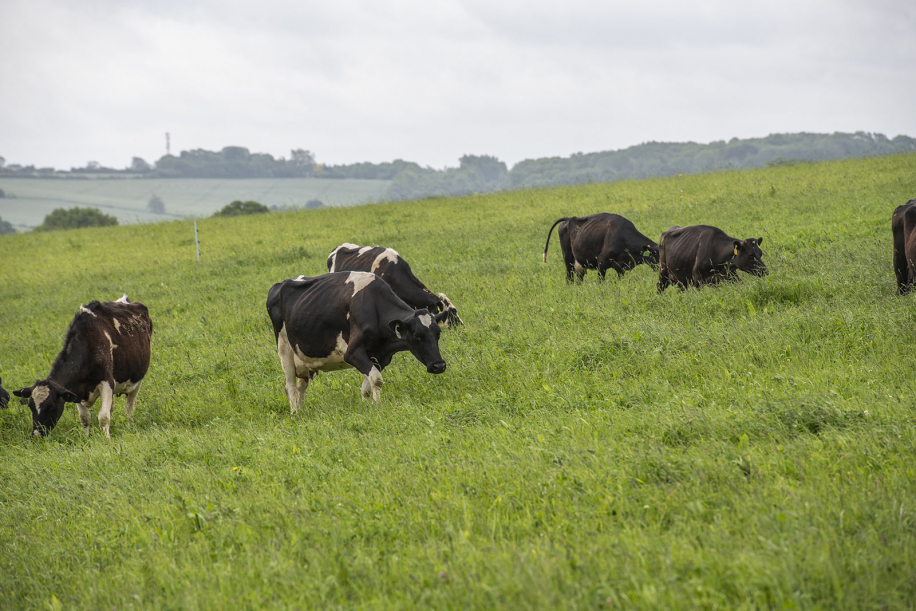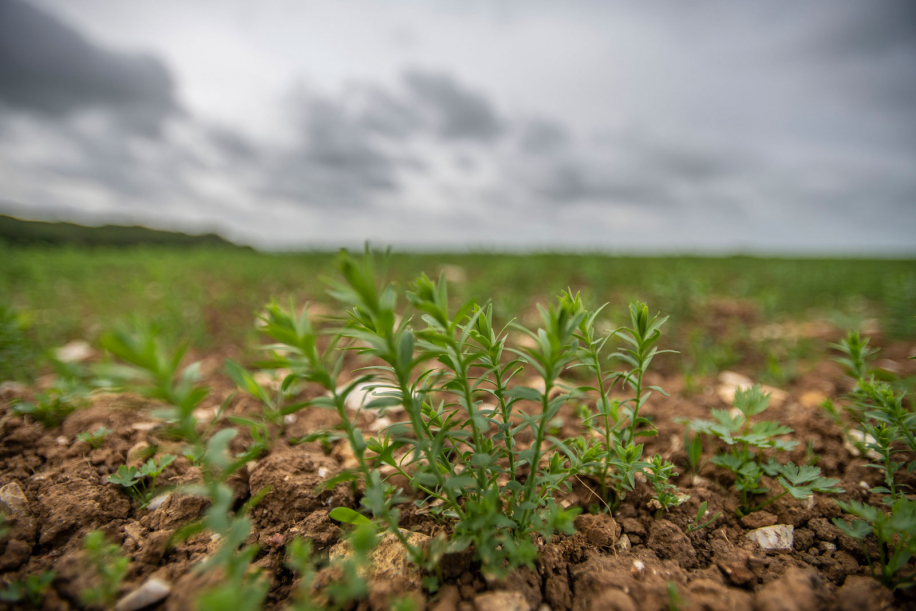Thinking beyond sustainability to abundance;
Beyond protecting to repairing and rebuilding the earth beneath our feet…
Nothing in our environment happens in isolation, and healthy ecosystems are complex webs of give and take. Regenerative agriculture works with these relationships, collaborating with sunlight, water and soil to create carbon-efficient systems that not only avoid harm, but actively advantage every living thing involved.
In this way, regenerative practices go beyond sustainability and aim at abundance. Whether rotating cattle and grass to re-fertilise topsoil or guaranteeing tenant fairness, it’s a holistic approach, responsive to the local particularities of the land.

ALL FEEDING INTO EACH OTHER
Understanding and enabling reciprocal connections between plant, animal and human communities, this way of farming is a movement: away from linear, low resilience, one-crop thinking (reliant on external resources, and running out of time) and towards biodiversity, with closed nutrient loops.
It’s about thinking in cycles, where everything creates abundant opportunities for everything else – helping the land to renew itself, and cutting costs in the process.

SUN TO SOIL
If humans knew how to harness it, the sunlight striking the earth’s surface in an hour and a half could power the world for a year. But plants have always known how to convert the sun’s power into production, and regenerative agriculture puts them to work.
It starts and ends with soil health. Through photosynthesis, green leaves convert carbon dioxide into carbon-based sugars that enter the soil through the roots. These sugars feed organic matter (mainly bacteria and fungi) in the soil. In return, bacteria and fungi create the nutrients that plants need to grow, and eliminate the need for artificial fertilisers.

CAPTURING CARBON, REPAIRING THE EARTH
Lots of regenerative practices, including livestock rotation and no tillage, are about keeping as much carbon in the soil as possible, lowering carbon emissions and raising fertility at the same time.
If we keep farming as we have been, tilling and fertilising in the name of efficiency, we only have 60 years of healthy, farmable topsoil left (United Nations). That’s why farming this way aims to not only protect, but to repair and rebuild the earth beneath our feet – using nature’s own systems of energy management.

OUR OPPORTUNITY
The more forms of life one field can support, the more fertility gets back into the soil – and the more forms of life the field can support. So the circle continues, so the health of the soil improves. And, as the farm thrives on its own natural resources, so does the community, and the economy, it feeds.
For us, regenerative agriculture means looking at one of our fields and seeing more than just a crop of wheat. It’s seeing vegetation that can be grazed through the winter and the dung produced by the grazers, full of bacteria and nutrients to enrich the soil. It’s seeing the beetles attracted to the dung, and seeing them provide food for the chickens. It’s seeing the bugs in the soil accessing nutrients that will allow our roots to grow deeper.
It’s all about seeing an abundance of opportunity in one place.
+
Rodale Institute
Agricology.co.uk
Carbon Sequestration, Rodale Institute
Climate change being fuelled by soil damage, BBC
We’re looking for more partners to join us on our journey into ultimate regeneration: fellow stewards of Kingsclere Estates filled with energy and vision.
Get in touch to find out more.
